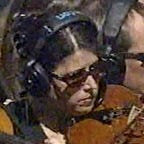Reimagine
Blogpost #3
by Amy DeJonge, Kara Atkinson, Yohan Ahn, Darlene Wagner
I hold two parallel strings, one in each outstretched hand. These strings run like two parallel railroad tracks. Not opposed to each other, simply parallel, never crossing, never connecting, always alongside. Trauma and faith/trust in God (in the context of much of the American Christian church) can feel like two separate strings held in two separate hands that are unable to come together or connect. One possible way to create movement between these two strings is viewing trauma and faith through the lens of theology from a lived experience or an embodied theology, as found in the spirituals, Psalms of lament, and Jesus.
The string or path of trauma is one of disorientation, suffering, squelching, and death. Trauma in its very nature is a shattering.¹ This shattering affects the body, language, memory, relationships, imagination, emotions, perception of the world, and so much more.² The string or path of faith in much of today’s church is one of truth, absolutes, victory, redemption and life. Where nothing appears certain for a trauma survivor, the church preaches absolutes. Where trauma is experienced in the body, the church caters mostly to the mind and intellect. Trauma produces a loss of words, where the church emphasizes words in prayer, worship, and sermons. Trauma has no straightforward linear movement, where the church promotes equations such as A + B = C (pray to God + God hears = the pain is healed). Trauma sits in Holy Saturday, the space between death and life, where the church tends to jump from Good Friday to Easter and redemption.³ Todd Billings in his book, Rejoicing in Lament, states that, “When worship expresses only “victory,” it can unintentionally suggest that the broken and the lonely and the hurting have no place here. The message can be, “If you want to fit in, first get your emotions in order so that you can be positive, and then go to worship.”⁴
So, what to do with these two parallel strings? How to allow movement and possibly connection? Looking to the body that sits in the middle holding the strings could provide some answers. A theology that lends toward a lived experience, an embodied theology, shows how these strings could move and connect.
James Cone in his book, The Spirituals and the Blues,⁵ discusses theology from the lived experience of African slaves during slavery in the songs that they sung, the spirituals. The singers of the spirituals, enduring the horrors of slavery, held the string of trauma whilst holding the parallel string of faith. They did not question the reality of suffering as every day they endured and faced trauma. They held that trauma in their bodies yet also held the songs of the spirituals in their bodies. These songs sung with their body, with other bodies, held a deep and rich belief in a just and good God, and of a Savior, Jesus, who suffered for and with them.
Another embodied theology is that of lament found in many of the Psalms. Billings states lament is grieving, mourning and also a form of protest and petition. He states, “Belief in God’s mercy, redemption, and sovereignty create lament. Without hope in God’s deliverance and the conviction that he is all-powerful, there would be no reason to lament when pain invaded our lives.”⁶ Mark Vroegop in his book, Dark Clouds, Deep Mercy, states, “Lament is rooted in what we believe. It is a prayer loaded with theology. Christians affirm that the world is broken, God is powerful, and he will be faithful. Therefore, lament stands in the gap between pain and promise.”⁷ Lament is a lived experience of standing in the gap between trauma and faith. Lament, like the spirituals, is an embodied cry to God in the midst of suffering.
Jesus was and is the ultimate theology of lived experience. He stood in the middle holding trauma and faith. This is especially seen in the Garden of Gethsemane,⁸ in the face of ultimate trauma and suffering. As Jesus faced death on the cross, he asked for his circumstances to change. His faith in God enabled him to bring together the trauma he was facing with his trust in the Father’s goodness and faithfulness. Jesus chose to trust in the midst of suffering, just like the spirituals, just like the Psalms of lament; he embodied the tension of trauma and faith.
A theology from lived experience allows for holding the strings of trauma and faith, enabling the parallel lines to no longer be parallel but to ebb and flow, connect and disconnect, in the tension and complexity of faith and trauma.
Endnotes:
- Shelly Rambo, Spirit and Trauma: A Theology of Remaining (Louisville, KY: Westminster John Knox Press, 2010).
- Bessell Van Der Kolk, The Body Keeps Score (New York: Penguin Books, 2014).
- Shelly Rambo, Spirit and Trauma: A Theology of Remaining (Louisville, KY: Westminster John Knox Press, 2010).
- Todd Billings, Rejoicing in Lament: Wrestling with Incurable Cancer & Life in Christ (Grand Rapids, MI: Brazos Publishing, 2015), 41.
- James Cone, The Spirituals and the Blues (Maryknoll, NY: Orbis Books, 1972).
- Todd Billings, Rejoicing in Lament: Wrestling with Incurable Cancer & Life in Christ (Grand Rapids, MI: Brazos Publishing, 2015), 26.
- Mark Vroegop, Dark Clouds, Deep Mercy: Discovering the Grace of Lament (Wheaton, IL: Crossway, 2019) 26.
- Matthew 26 (New International Version).
Bibliography
Billings, J. Todd. Rejoicing in Lament: Wrestling with Incurable Cancer and Life in Christ. Grand Rapids, MI: Brazos, 2015.
Cone, James. The Spirituals and the Blues. Maryknoll, NY: Orbis Books, 1972.
Rambo, Shelly. Spirit and Trauma: A Theology of Remaining. Louisville, KY: Westminster John Knox Press, 2010.
Van Der Kolk, Bessel A. The Body Keeps the Score: Brain, Mind, and Body in the Healing of Trauma. London: Penguin, 2014.
Vroegop, Mark. Dark Clouds, Deep Mercy: Discovering the Grace of Lament. Wheaton, IL: Crossway, 2019.
